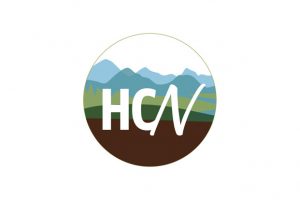ALIGN YOURSELF – LOWER LEG INJURIES
As all you outdoor enthusiasts in the Foothills embark on summer trail running, hiking, biking and sunny dog walks, we see an increase in hip and knee issues. These injuries may be traumatic in nature, a trip and fall, landing on a hip or twisting your knee. More often than not though, we find they are related to common muscle imbalances in the hip and lower leg.
One aspect we always assess is the alignment of the lower leg during movement, such as a squat. A single leg squat is especially indicative of alignment problems in the lower leg. This movement requires the pelvis and lumbar spine to stay neutral as the hip, knee and ankle all flex in sequence.
If there is poor coordination and alignment along these joints, we aim to determine where it may be coming from. Weak core muscles, such as the transverse abdominus – the deepest abdominal layer, and the iliopsoas – a spine stabilizer and hip flexor, can contribute by not being efficient in stabilizing the spine and pelvis during motion. The gluteal muscles (our butt muscles) may contribute as well by not being efficient at stabilizing the pelvis as the hip is in motion. If the gluteal muscles are weak, the pelvis will slightly drop on one side and cause the knee to fall inwards (which is caused by the hip adduction).
The hip is not able to maintain its neutral position. This motion of the knee falling inwards can put stress on the soft tissues surrounding the kneecap. Iliotibial Band Syndrome (IT Band), Patellofemoral Pain Syndrome, tendonopathies and bursitis are common problems that develop. This mal-alignment at the knee can also stress the ligaments and meniscus structures, putting you more at risk of ligament tears (MCL, ACL), meniscal derangements and bursitis issues (Baker’s Cyst for example).
Locally at the knee, the inner quadriceps muscle may be underdeveloped. A previous injury, postural habits, or general de-conditioning may cause this. The Vastus Medialis Oblique (VMO) is important in the last 30 degrees of knee extension (think going down stairs, gradual downhill hiking). The VMO largely contributes to the proper tracking of the patella (kneecap) and coordinated motion throughout knee extension.
Further down the leg, the ankle and foot may contribute to hip and knee problems as well. A pronated foot, when the inner arch of the foot is flattened, may contribute to the knee falling inwards during a squat. As the body weight is shifted more onto the big toe and inner aspect of the foot, the knee is drawn towards the big toe and the whole lower leg rotates inwards. A previous ankle sprain may also contribute to this issue as the ankle joint may be stiff and prevent the knee from flexing directly over the ankle. Plantar fasciitis, achilles tendonopathies and Morton’s Neuroma nerve impingements may develop.
Some techniques we use for these common problems are taping (Kinesiotape) to encourage proprioception (joint and muscle awareness) and relieve tension on stressed tissues; soft tissue stretching, massage and Active Release Techniques for tight and overused muscles; Electrical Muscle Stimulation, a current applied to the muscle to help engage de-conditioned muscles; needling techniques such as Intramuscular Stimulation or Traditional Chinese Acupuncture, to relieve tight muscle bands and restore circulation. As well as exercise prescription to restore muscle symmetry and strengthen weakened muscles. Specific exercises tailored to your unique posture are the most helpful in prevention and healing. This is what will make the difference in reshaping your movement patterns and teaching your body proper mechanics.
If you are experiencing any of the common injuries mentioned above, please don’t delay coming in to see the great team of therapists at Bragg Creek Physiotherapy. Our crew includes physiotherapists, athletic therapy, massage therapy, personal training and a consultant with Orthotics in Motion. We can tailor a specific treatment plan suitable for you and the activities you enjoy.
The crew at Bragg Creek Physiotherapy wish you all a great summer!
Jennifer Gordon
(BScPT, GunnIMS, Medical Acupuncture)
Physiotherapist – Bragg Creek Physiotherapy
www.braggcreekphysio.com

























